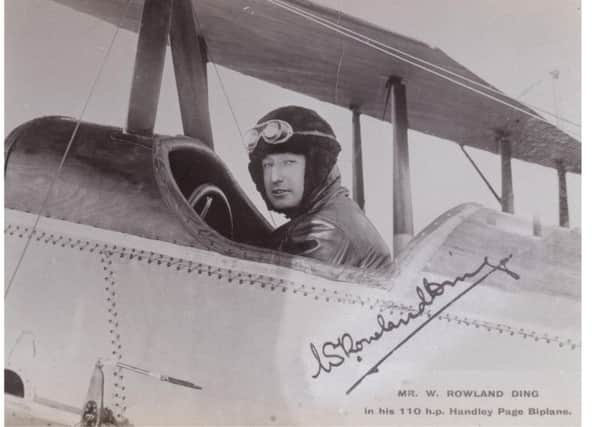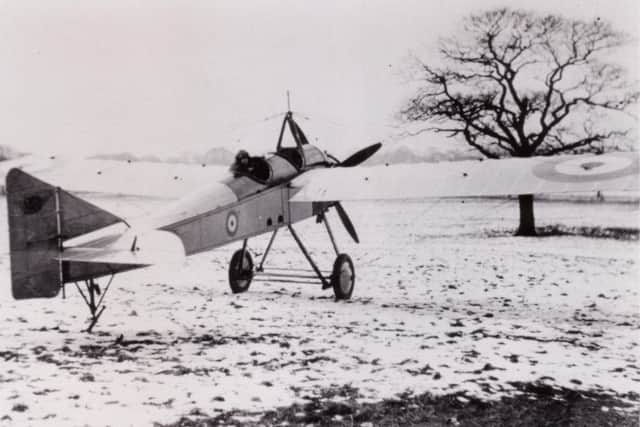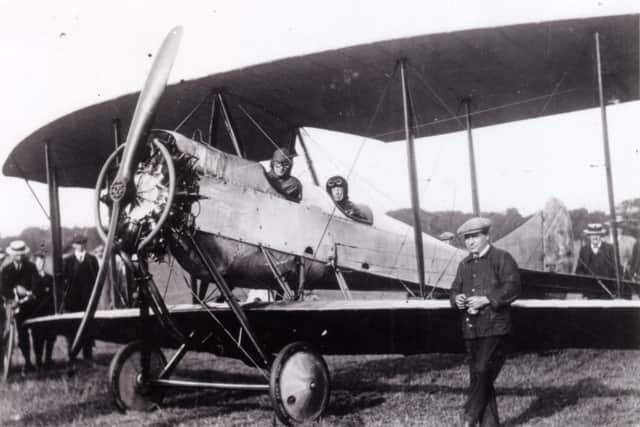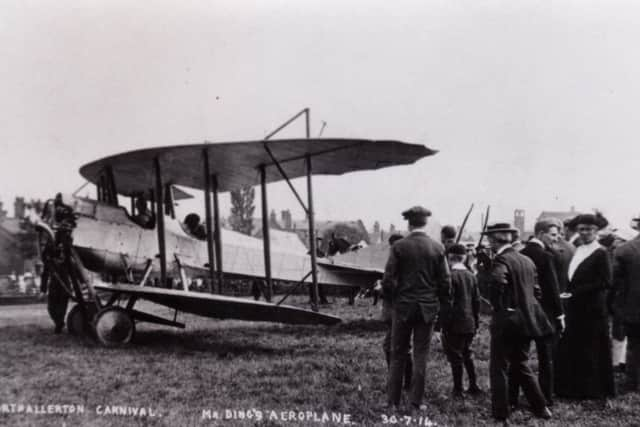100 YEARS ON: Leeds remembers daredevil test pilot Rowland Ding


At a time when planes were a rare sight in the skies and pilots were few in number, the talented airman became a celebrity in Leeds where he tested planes from Blackburn’s aircraft factory on Roundhay Road.
Schoolchildren were said to gather at Soldiers’ Field every day to wave him off, shouting ‘Take me up with you, Mr Ding!’ and residents would look out for his personalised plane in the sky, emblazoned with ‘Ding’ under the wings.
Advertisement
Hide AdAdvertisement
Hide AdDespite only flying for three years, Ding had been at the controls of more aircraft than any other Briton when he died at the age of just 31 after a routine test flight went fatally wrong.


That final flight was 100 years ago today, on May 12, 1917.
Around 1,000 spectators watched in horror as Ding’s biplane fell from the sky and crashed into woodland at Oakwood before bursting into flames.
Tonight at 6pm - the time of the crash - members of the public are invited to join members of Ding’s family and dignitaries at the crash site to mark the anniversary and unveil a plaque in tribute to the forgotten airman.
Advertisement
Hide AdAdvertisement
Hide AdThe organiser of the ceremony is Matthew Ridley, the grandson of Eric Sudell, who was one of Ding’s many fans and witnessed his icon’s death as an eight-year-old boy.


Mr Sudell died in 2008 aged 99 but would still regularly speak of Ding to his family.
Matthew, 43, of Roundhay, said: “When I was growing up he took me to the crash site and talked about it. He said he had seen the plane break apart and watched it plummet. He went to the crash site the next day and they all got souvenirs from the crashed plane. He kept them for many years.
“In Leeds, in my grandfather’s generation, everyone knew about Rowland Ding. He was quite remarkable. But as time has gone on, it’s all faded. It’s a reason to mark the anniversary, to sort of continue his memory.”
Advertisement
Hide AdAdvertisement
Hide AdIt was through Matthew’s research that contact was made with Mr Ding’s family, including grandson Julian Ding, 61, and great-grandson Charlie Hayhurst-Ding, 18, who now live near Kidderminster but will both be at tonight’s ceremony.


Julian said: “It’s nice that his memory is being kept alive. Every time I come up to Leeds I learn something more about it. And to be able to stand at the spot where he used to take off in Soldiers’ Field - and where he died - it all becomes a lot more tangible.”
Rowland Ding was well aware he took his life into his own hands every time he flew a plane.
In ‘Yorkshire’s Early Flying Days’, author Ronald Nelson Redman described how Ding once wrote to his mother: “If I am killed, you will always know that I have done my duty for the advancement of aviation and my duty to my country, and if I have to go, I would prefer that sudden ending to a lingering bed of sickness.”
Advertisement
Hide AdAdvertisement
Hide AdDespite only taking up professional flying in April 1914, Ding had clocked up more miles in the air than anyone in the country, survived five bad crashes, set up a flying school in Windermere to teach naval pilots how to use seaplanes, became chief test pilot at Blackburn’s, hosted lectures and was star attraction at shows such as July 1914’s Northallerton Carnival.


Just three weeks after getting his pilot’s licence, he became the first pilot of a royal flight when he was chartered to fly Princess Ludwig of Lowenstein Wetheim across the Channel.
His grandson Julian said: “He was clearly a natural pilot, especially when you consider the sort of equipment he had to use. There was no computer modelling. It was real fly-by-the-seat-of-your-pants and very much trial and error.
“At Blackburn’s, they were banging out planes as fast as they could [for the war effort], in what was a very embryonic industry, with no experts. Yet he test flew what came off the production line.”
Advertisement
Hide AdAdvertisement
Hide AdWith little more than a rough airspeed indicator and a compass to help guide his way, Ding was arguably an adrenalin junkie as well as a remarkably talented pilot.
He was also a great showman. As well as his personalised plane, in Leeds, his aerial acrobatics became known as ‘dinging’.
Julian said: “He clearly needed the rush and liked to play to the crowd.


“That last flight he took, he was testing a Blackburn bE 2c biplane which was essentially a bomber and reconnaissance aircraft - not designed for any violent manoeuvres. The last words that anyone said to him was from the director of productions, or someone like that, who said: ‘No fancy flying’. Famous last words.”
Advertisement
Hide AdAdvertisement
Hide AdHe was seen flying almost vertically before his plane fell from the sky.
His body was removed from the burning wreck almost straightaway and taken out of public view into the grounds of what is now Oakwood Hall but was then a private house called The Acacias.
He is buried in the churchyard at Papworth Saint Everard in Cambridgeshire. The grave has a military headstone which is unusual given Ding was not a military man but is a measure of his ties to the military and the esteem in which he was held.
Julian added: “He was very brave but he was completely dedicated to the idea of flying and advancing flight. I just wish I had known him. I wish he had survived so I could have met him.”
The plaque unveiling ceremony will take place today at 5.45pm at the crash site near the junction of Oakwood Grange Lane and Tatham Way. All are welcome to attend.